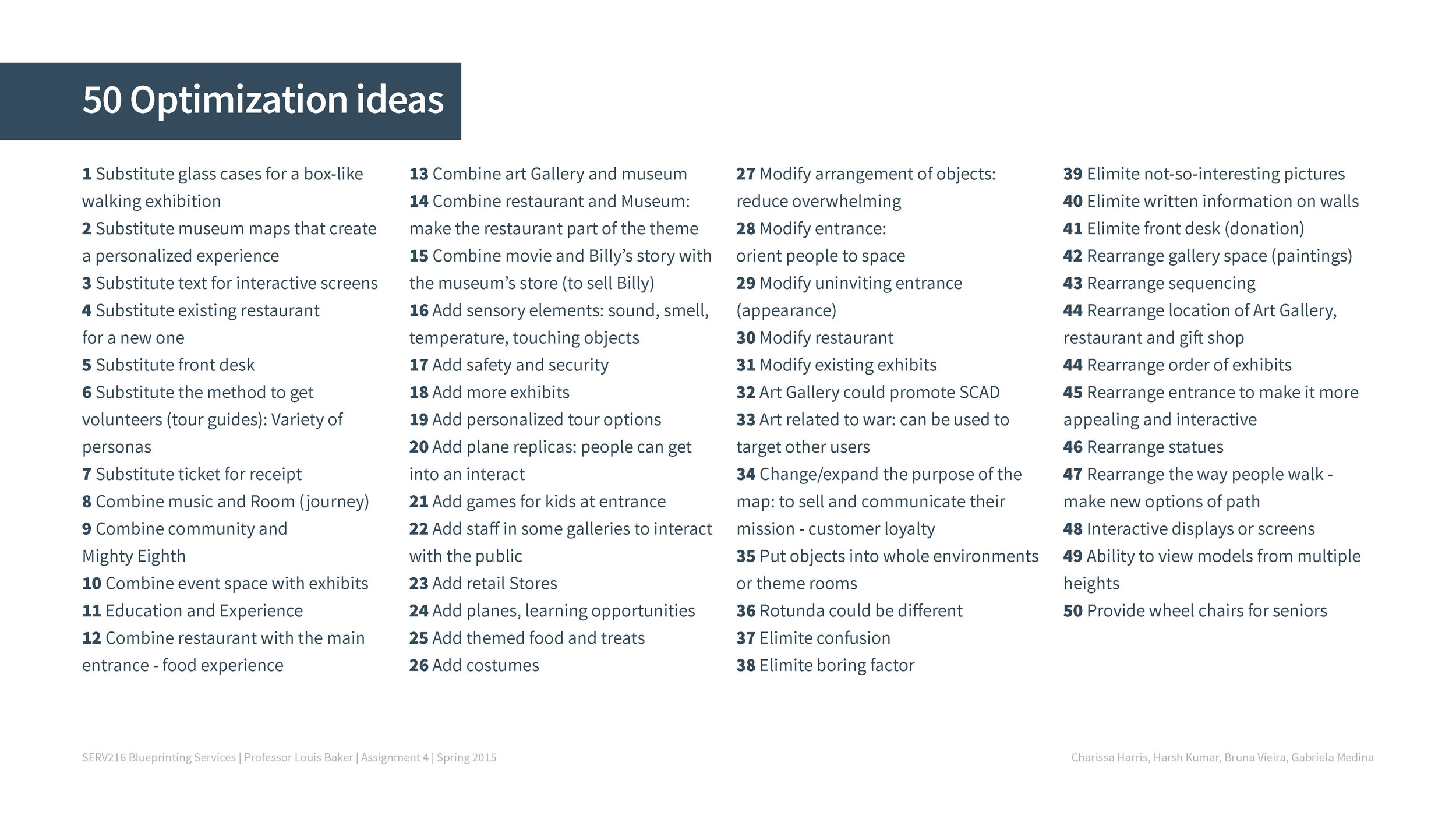LATERAL THINKING
National Museum of the Mighty Eighth Air Force
Problem
After synthesizing data, uncovering deeper insights, identifying design opportunities and framing strategic problems, the students were asked to use methods of lateral thinking to generate concepts that would optimize, (incrementally improve) and transform, (radically improve) the museum-goer experience at the The National Museum of the Mighty Eighth Air Force.
Approach
Lateral thinking is the mental process of generating ideas and solving problems by looking at a situation or problem from a unique perspective. It is the ability to think creatively, also known as “blue sky” or “outside the box” thinking. Lateral thinking methods/tools were explored to help solve the strategic problem(s) and fulfill key customer needs. These were converted into coherent concepts before using a decision matrix to screen and chose the most promising one(s).
Alternatives: Use concepts to breed new ideas
Focus: Sharpen or change your focus to improve creative efforts
Challenge: Break free from the limits of accepted ways of doing things
Random Entry: Use unconnected input to open new lines of thinking
Provocation and Movement: Move from a provocative statement to useful ideas
Harvesting: Select the best ideas and shape them into practical solutions
Treatment of Ideas: Strengthen and shape ideas to fit an organization or situation
Solution
The team presented the strategic problems and different realms of experience, before discussing the use of lateral thinking methods including related worlds and SCAMPER to ideate unconventional solutions. These were visualized through a new/revamped blueprint, user scenario (with matching storyboard), and a new service package for the organization.
strategic problems
realms of experience
related worlds
SCAMPER (Substitute, Combine, Adapt, Modify, Put to another use, Eliminate, Reverse)
optimization
transformation
service package
Result
Lateral thinking techniques provided a deliberate, systematic process that resulted in innovative thinking. By using these unconventional thinking techniques, lateral thinking enabled students to find creative solutions that they may otherwise have not considered.
Lateral thinking is a term coined by Edward De Bono in 1967 in his book The Use of Lateral Thinking. De Bono explained typical problem-solving techniques involve a linear, step-by-step approach. He believed that more creative answers could be obtained by taking a step sideways, (lateral) to examine a situation or problem from an entirely different viewpoint.




























